Abstract
In 1963 the World Health Organization established a system for the collection and dissemination of information on viral infections and by 1976, laboratories in 49 countries were participating in this scheme. The present study is in two parts: part 1 is an analysis of almost 60 000 reports on neurological disease associated with viral and Mycoplasma pneumoniae infections reported during the 10-year period 1967-76. This analysis showed a steady increase in the yearly number of reports of viral neurological diseases, which closely followed the general increase in the overall reporting of virus diseases. Likewise, the seasonal pattern was similar to that seen in general for any given virus.
Over 75% of the cases were in children. Over half of all viral neurological diseases were associated with enteroviruses, while the myxoviruses accounted for almost 30%. Among the myxoviruses, mumps virus was by far the most frequently reported. The polioviruses were the agents most commonly detected in cases of paralytic disease. The other enteroviruses, mumps virus, and the herpesviruses were the most frequently reported viruses in cases of aseptic meningitis or encephalitis. On the other hand, one-third to over one-half of the reports on the myxoviruses (excluding mumps and measles) related to ill-defined clinical conditions.
Part 2 of the study deals in particular with viruses whose role in neurological disease is less well documented. One laboratory reported an outbreak of adenoviral aseptic meningitis in Czechoslovakia, while another described neurological disease associated with M. pneumoniae infection in Finland. Part 2 also includes a detailed appraisal of viral infections diagnosed in the Netherlands during the period 1973-76. The results are very similar to those routinely reported.
Full text
PDF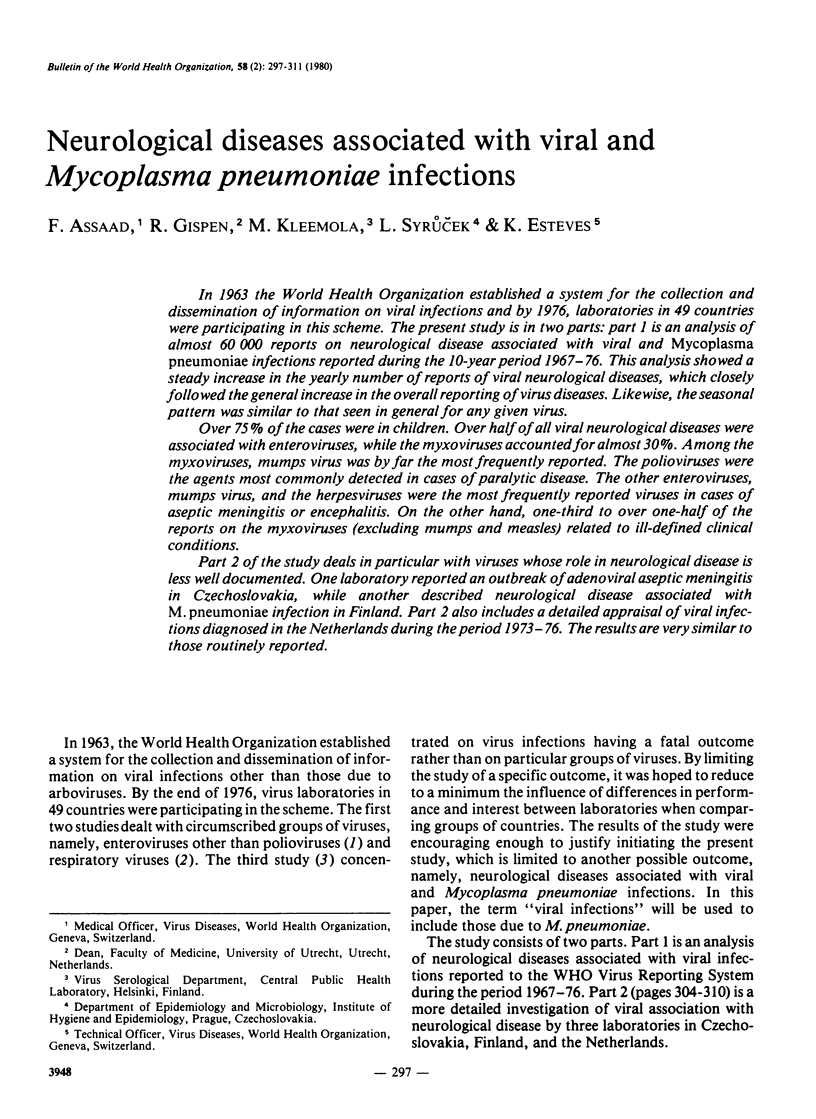
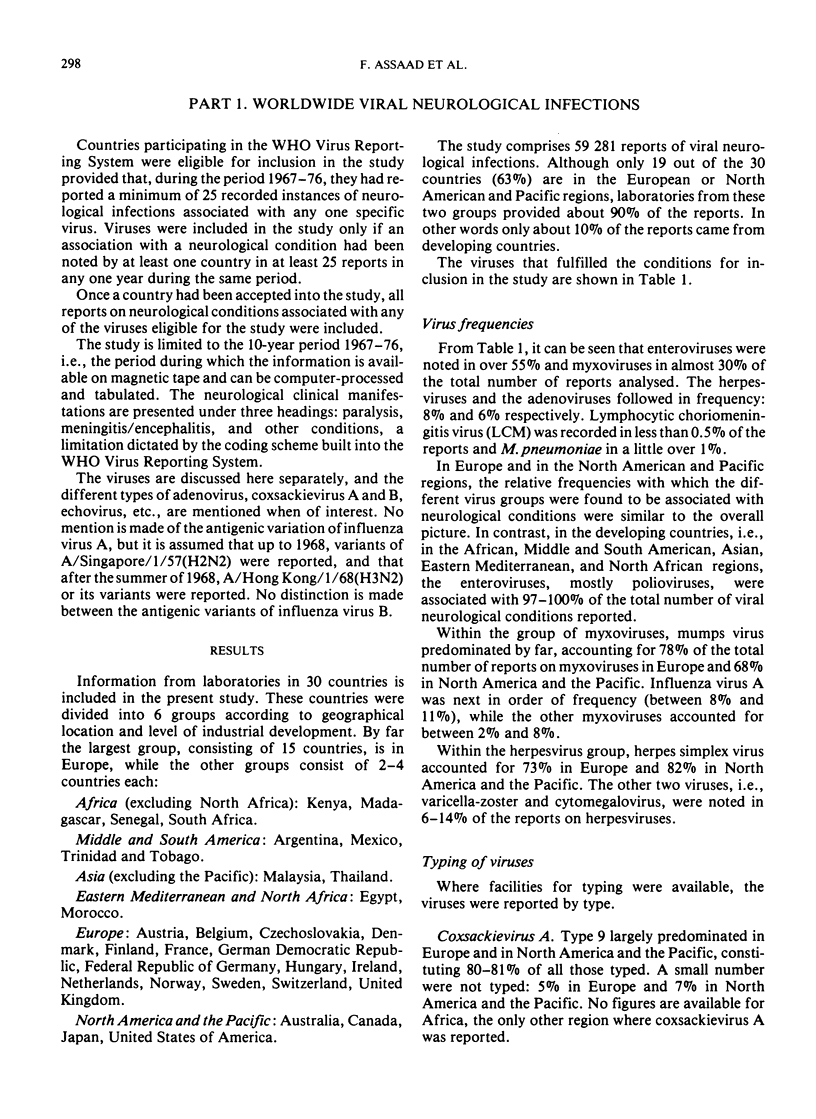
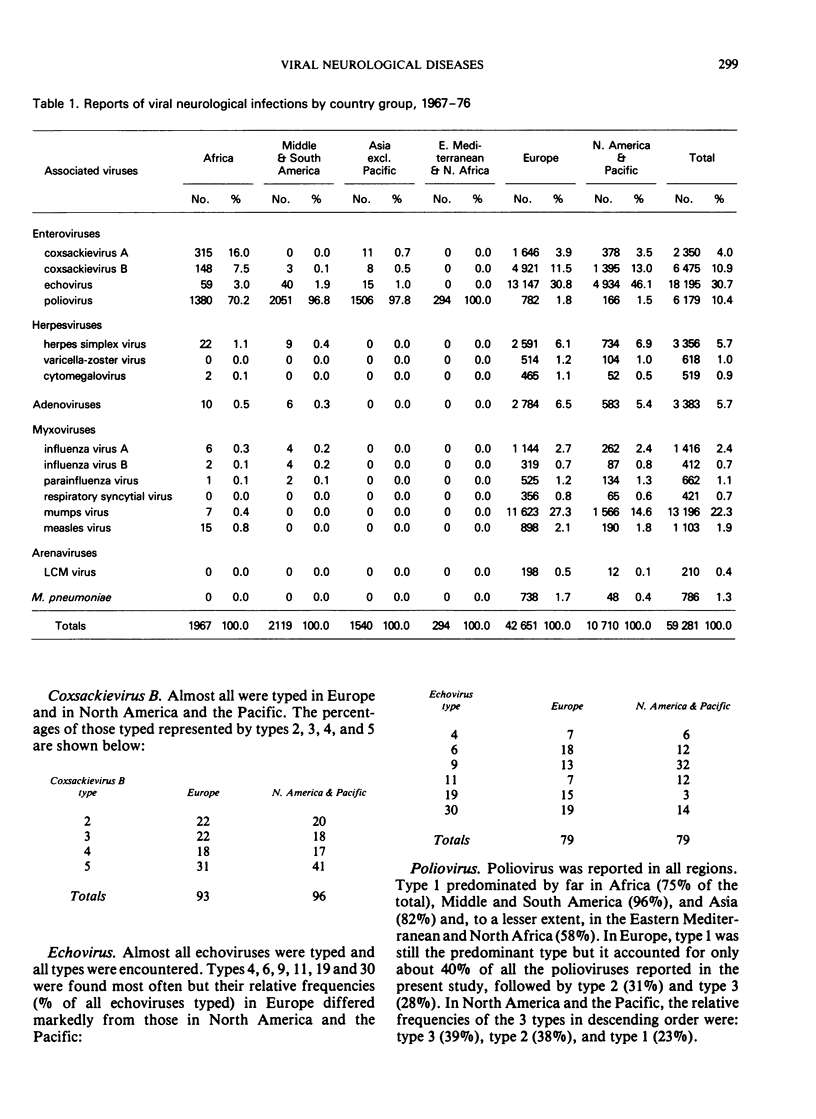
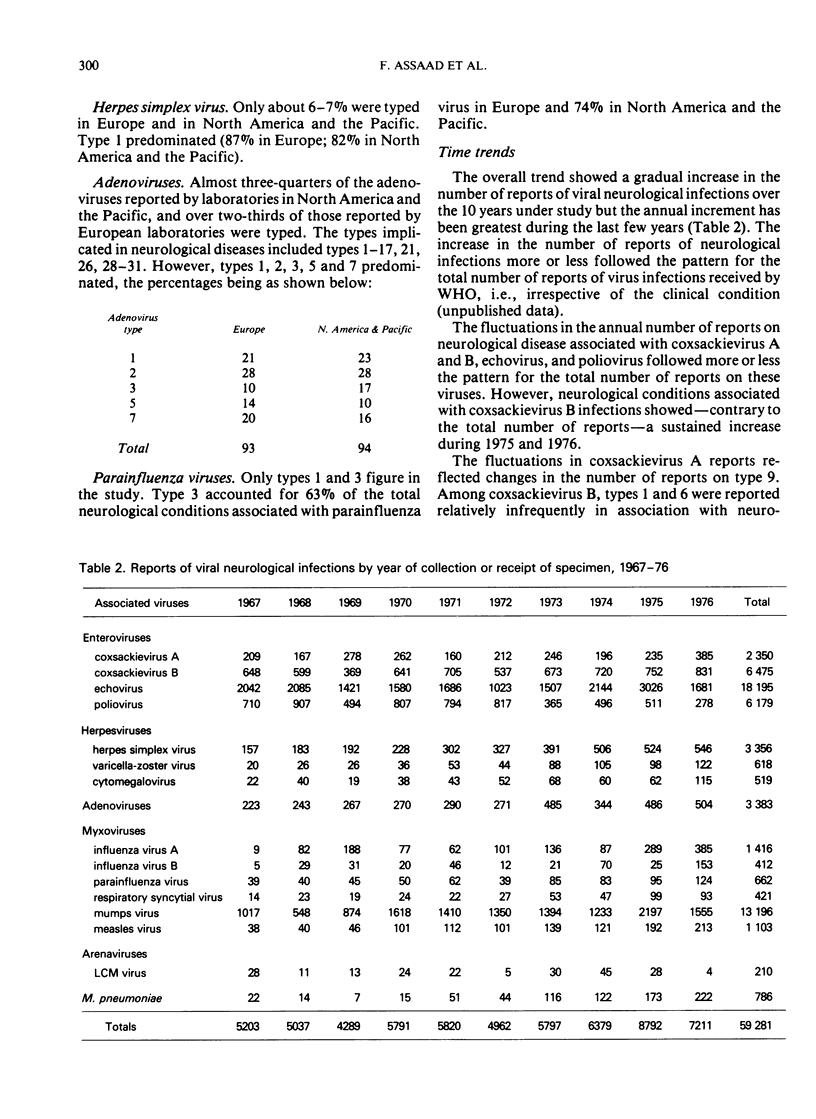
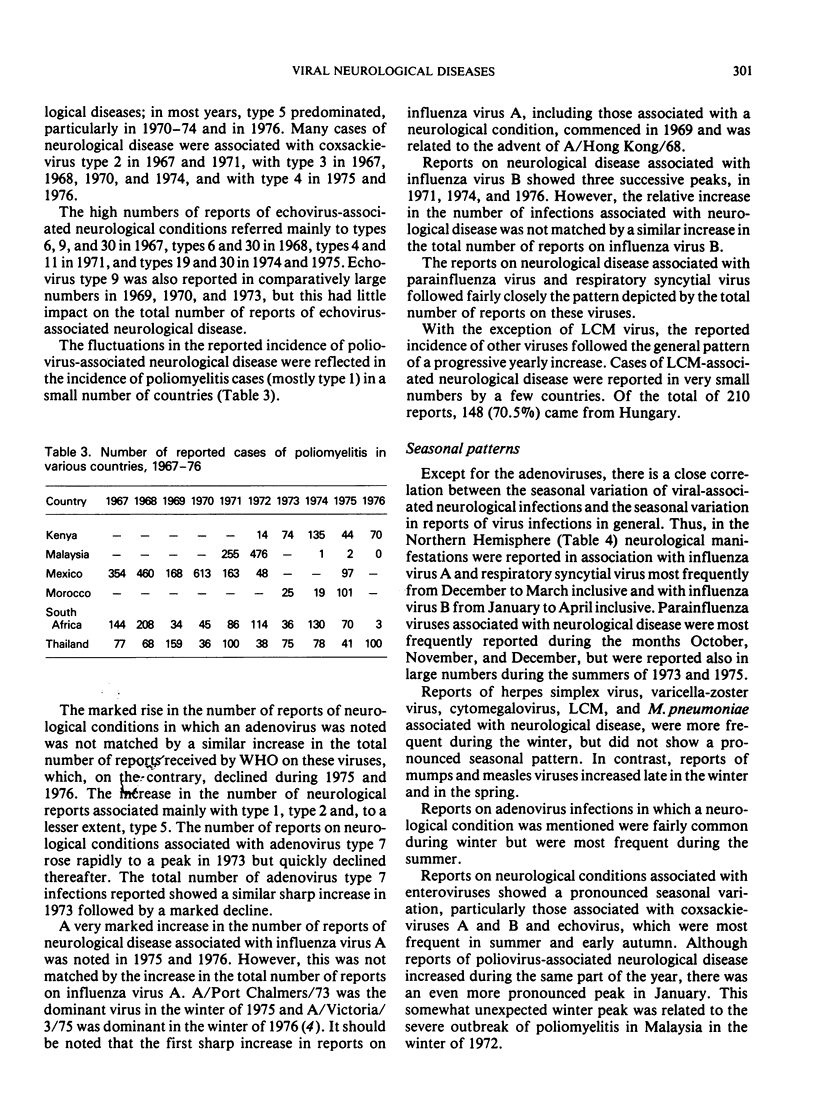
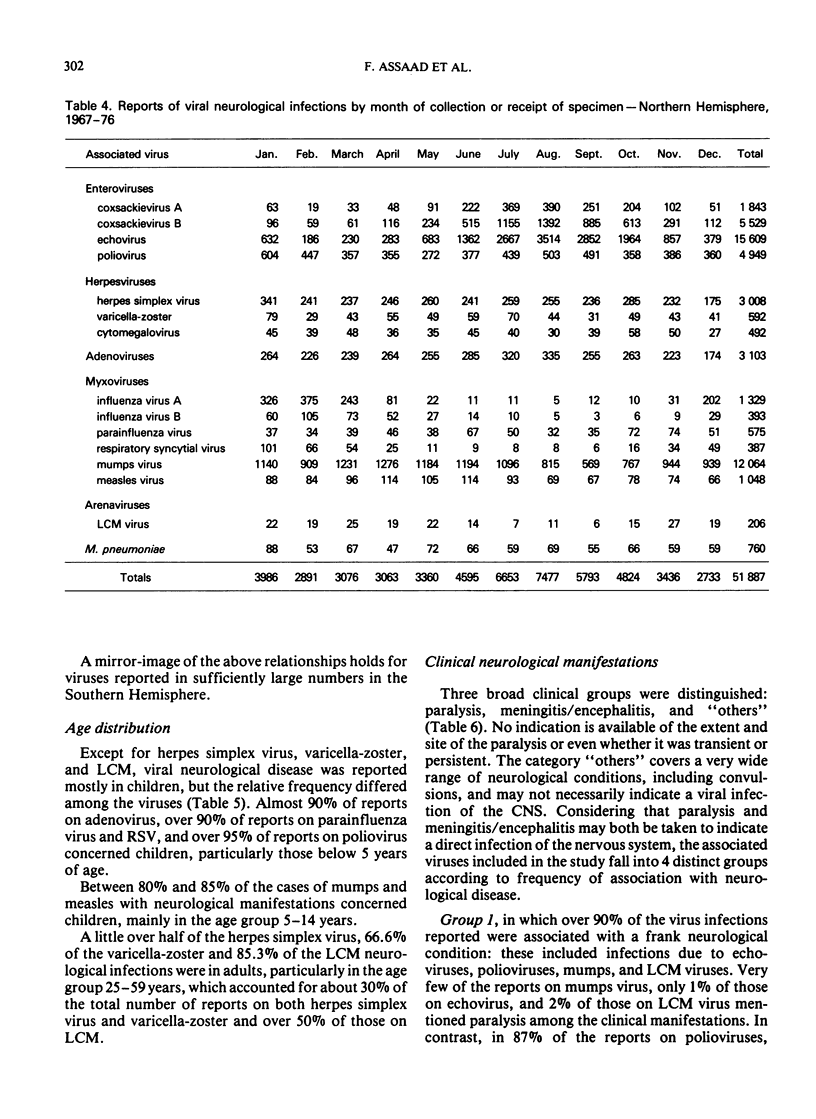
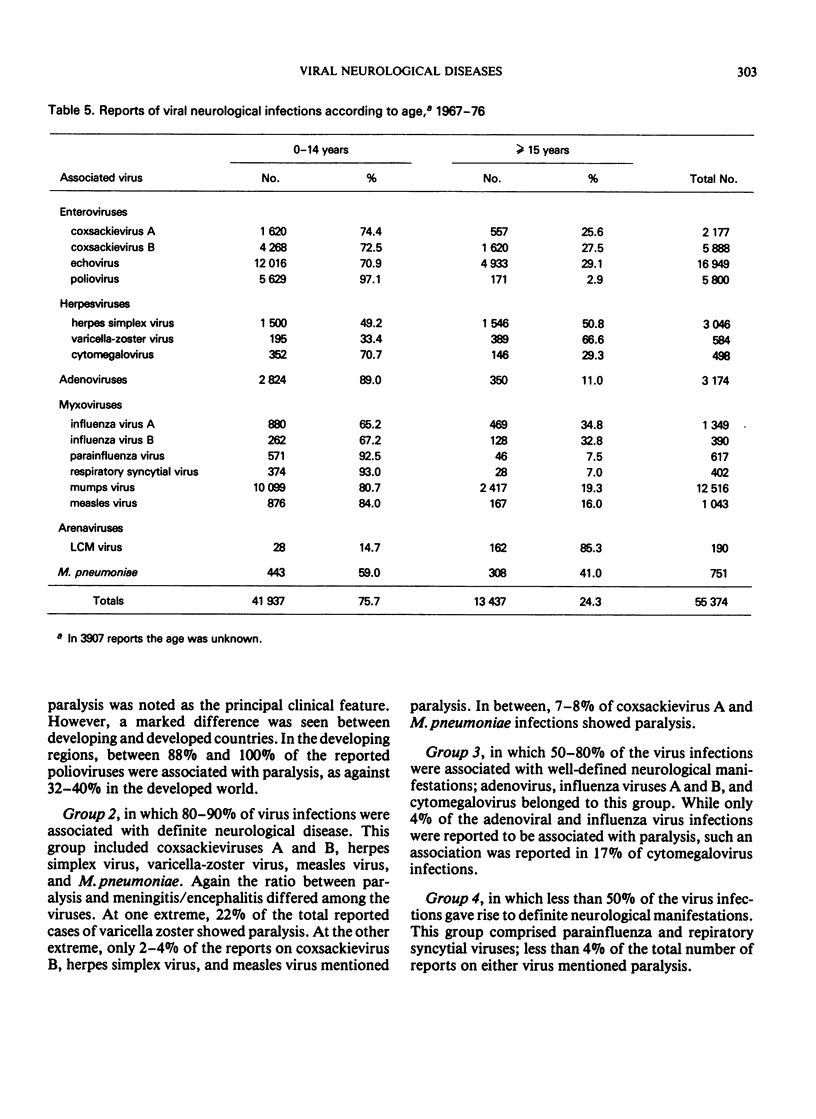
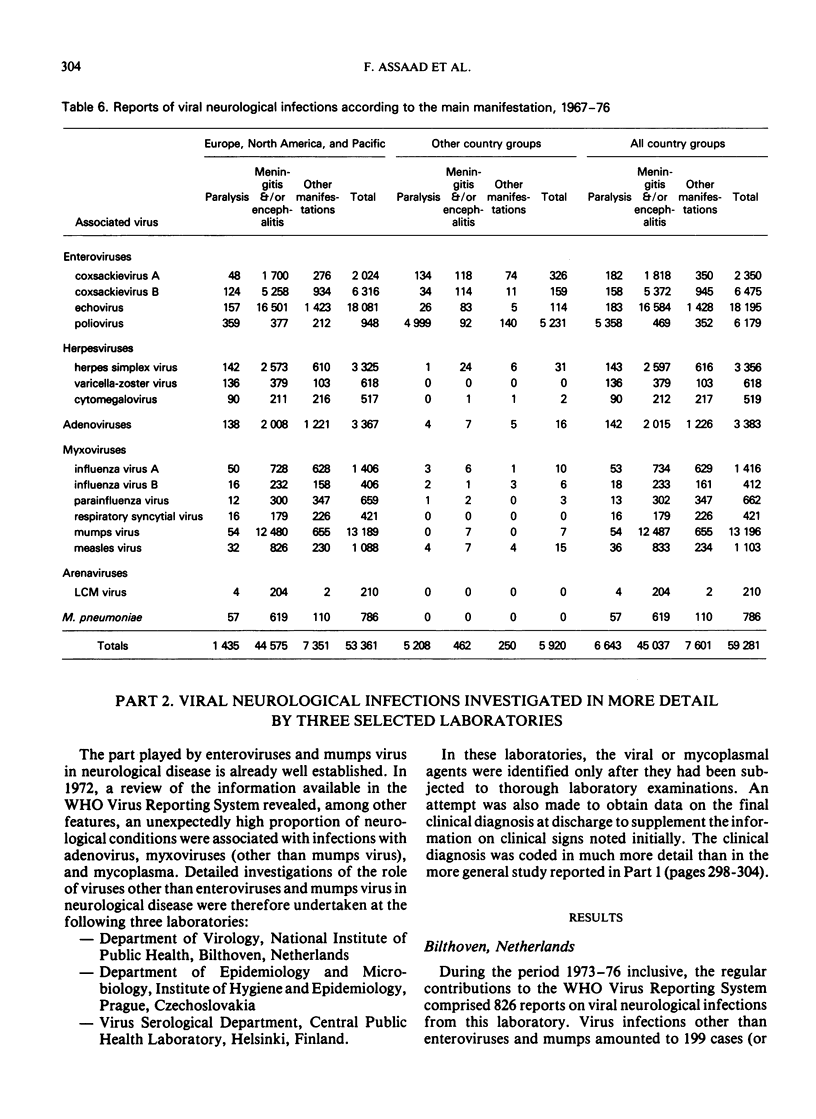
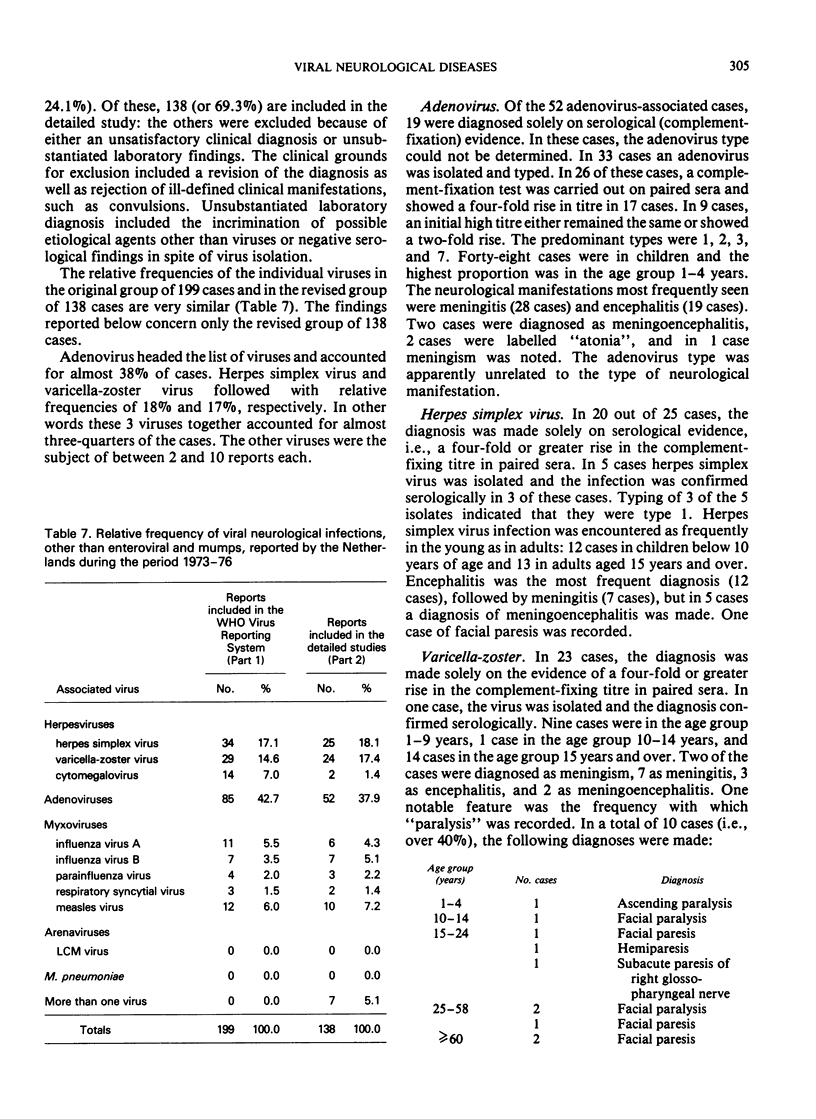
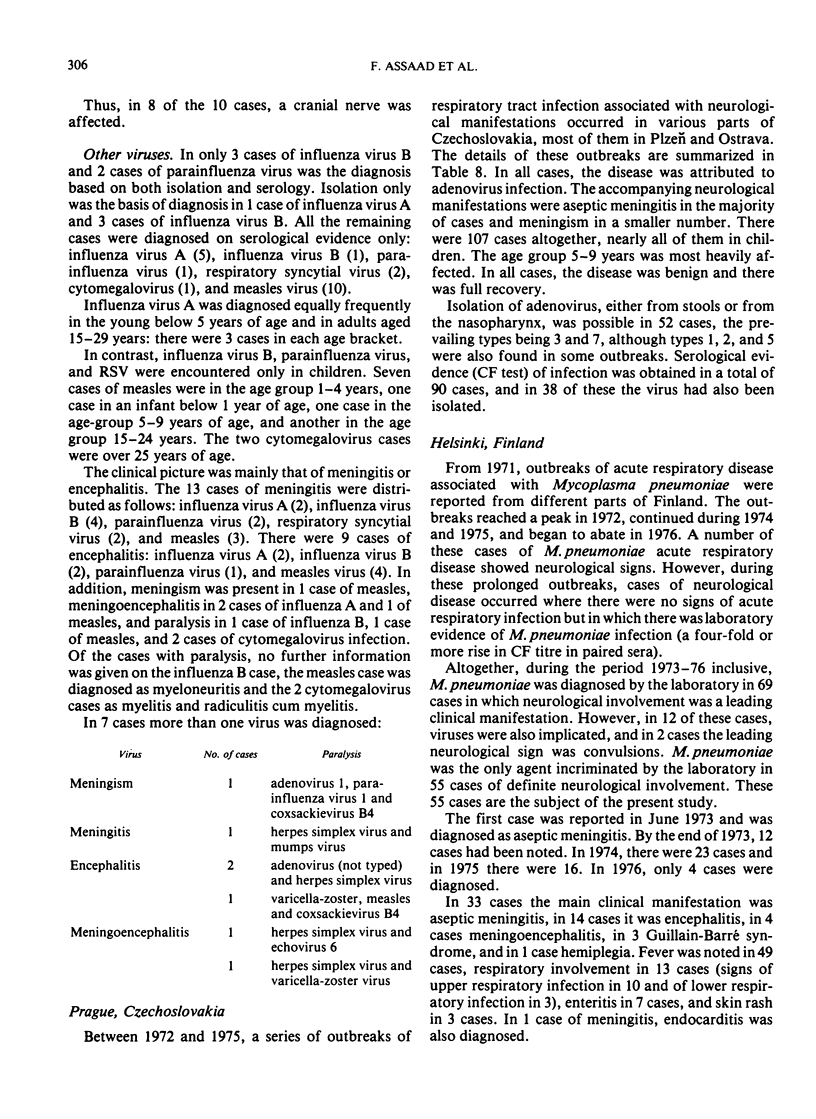
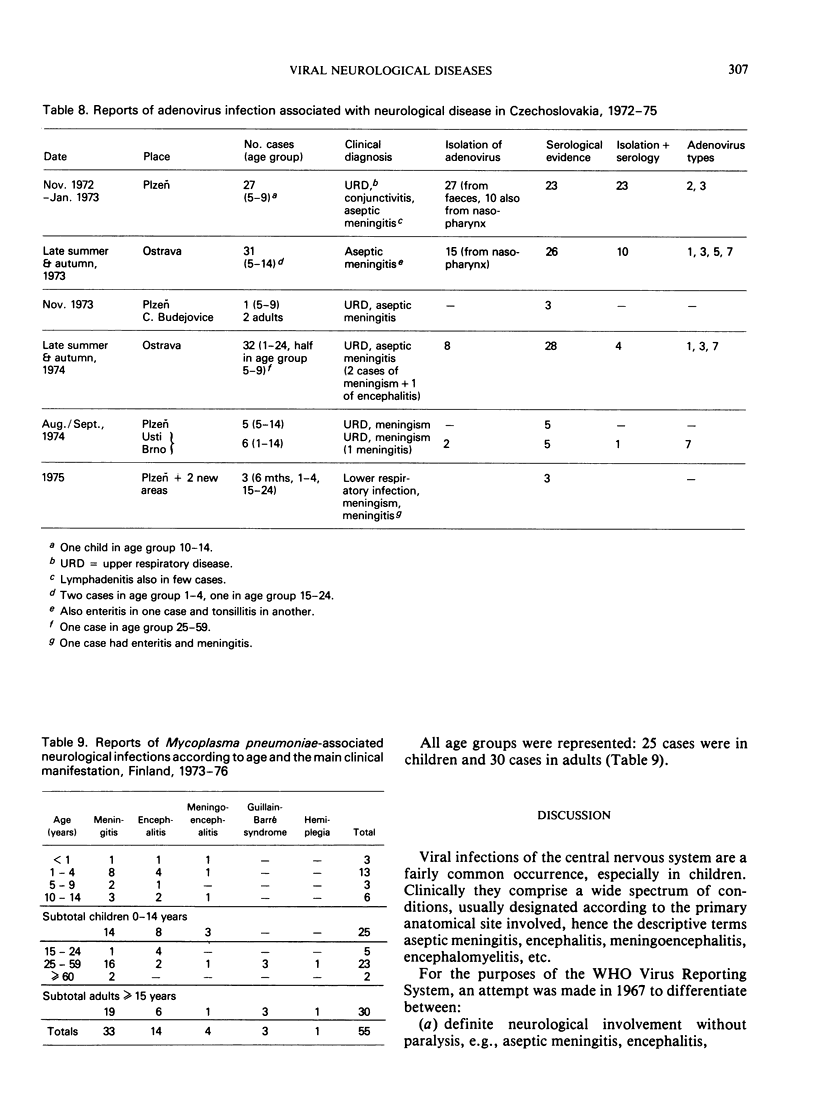

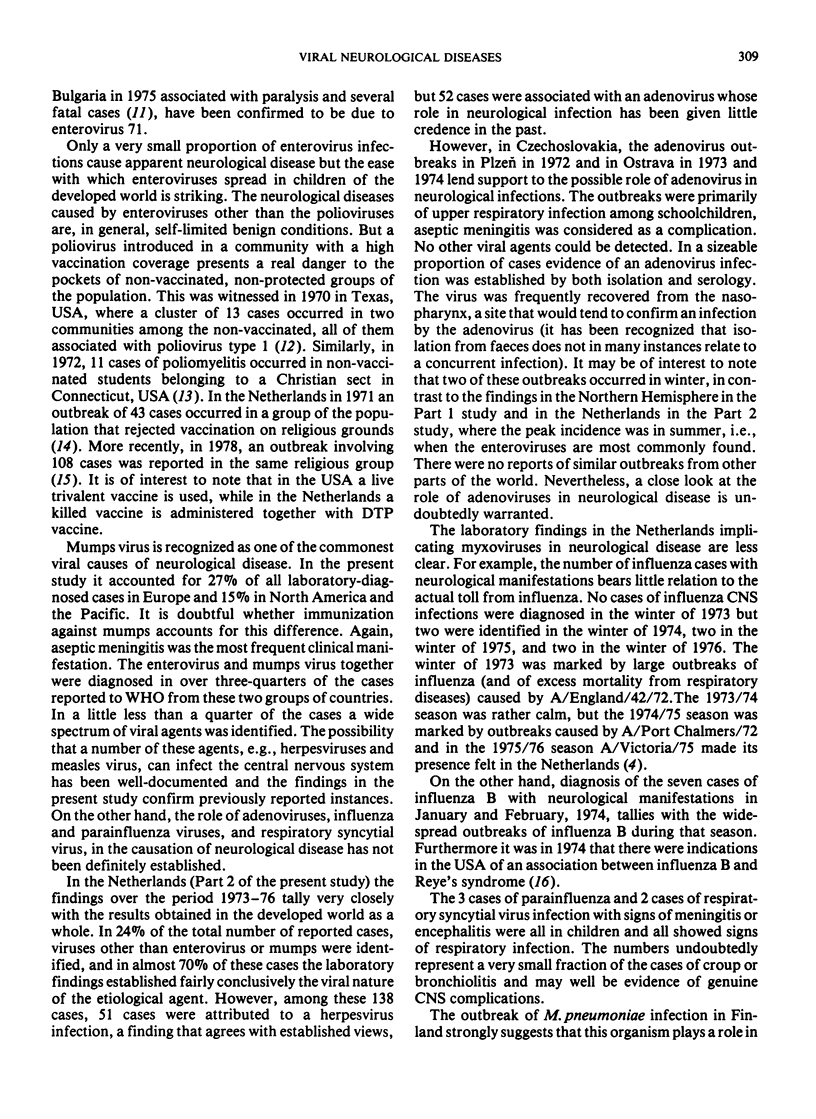
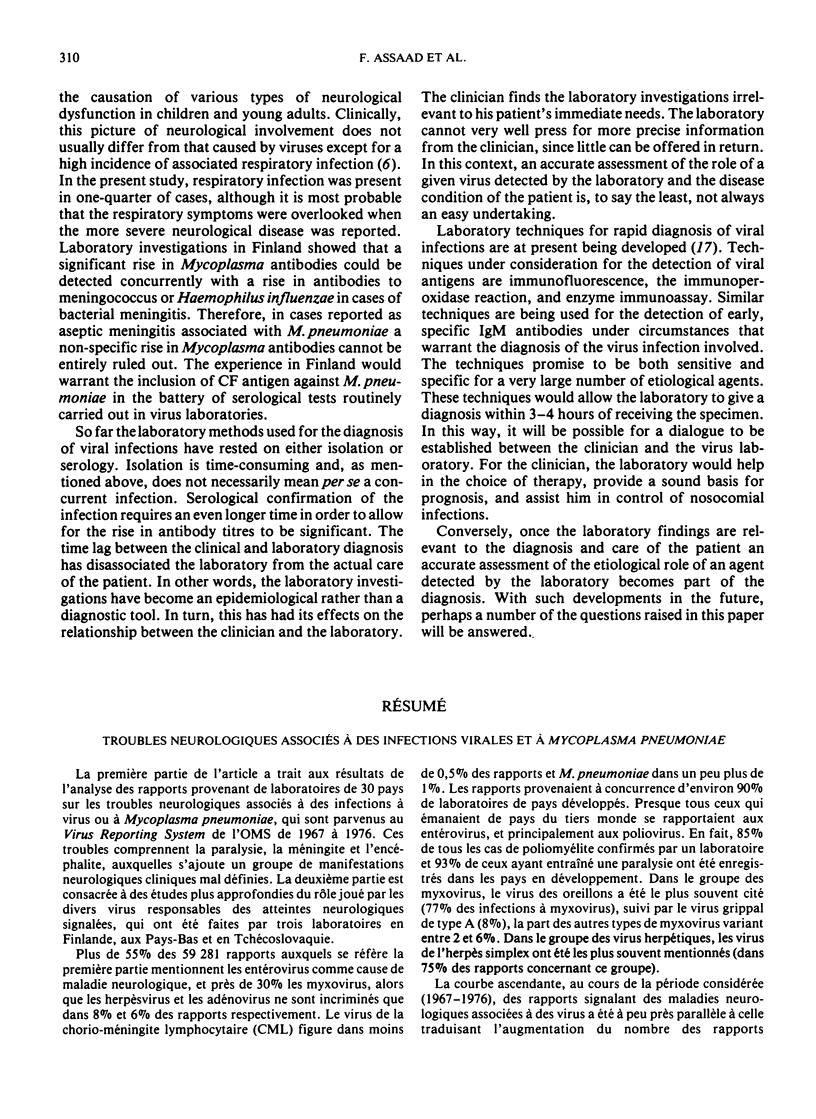

Selected References
These references are in PubMed. This may not be the complete list of references from this article.
- Assaad F., Borecka I. Nine-year study of WHO virus reports on fatal viral infections. Bull World Health Organ. 1977;55(4):445–453. [PMC free article] [PubMed] [Google Scholar]
- Assaad F., Cockburn W. C. A seven-year study of WHO virus laboratory reports on respiratory viruses. Bull World Health Organ. 1974;51(5):437–445. [PMC free article] [PubMed] [Google Scholar]
- Assaad F., Cockburn W. C. Four-year study of WHO virus reports on enteroviruses other than poliovirus. Bull World Health Organ. 1972;46(3):329–336. [PMC free article] [PubMed] [Google Scholar]
- Blomberg J., Lycke E., Ahlfors K., Johnsson T., Wolontis S., von Zeipel G. Letter: New enterovirus type associated with epidemic of aseptic meningitis and-or hand, foot, and mouth disease. Lancet. 1974 Jul 13;2(7872):112–112. doi: 10.1016/s0140-6736(74)91684-5. [DOI] [PubMed] [Google Scholar]
- Cockburn W. C., Drozdov S. G. Poliomyelitis in the world. Bull World Health Organ. 1970;42(3):405–417. [PMC free article] [PubMed] [Google Scholar]
- Kennett M. L., Birch C. J., Lewis F. A., Yung A. P., Locarnini S. A., Gust I. D. Enterovirus type 71 infection in Melbourne. Bull World Health Organ. 1974;51(6):609–615. [PMC free article] [PubMed] [Google Scholar]
- Pereira M., Assaad F. A., Delon P. J. Influenza surveillance. Bull World Health Organ. 1978;56(2):192–203. [PMC free article] [PubMed] [Google Scholar]


